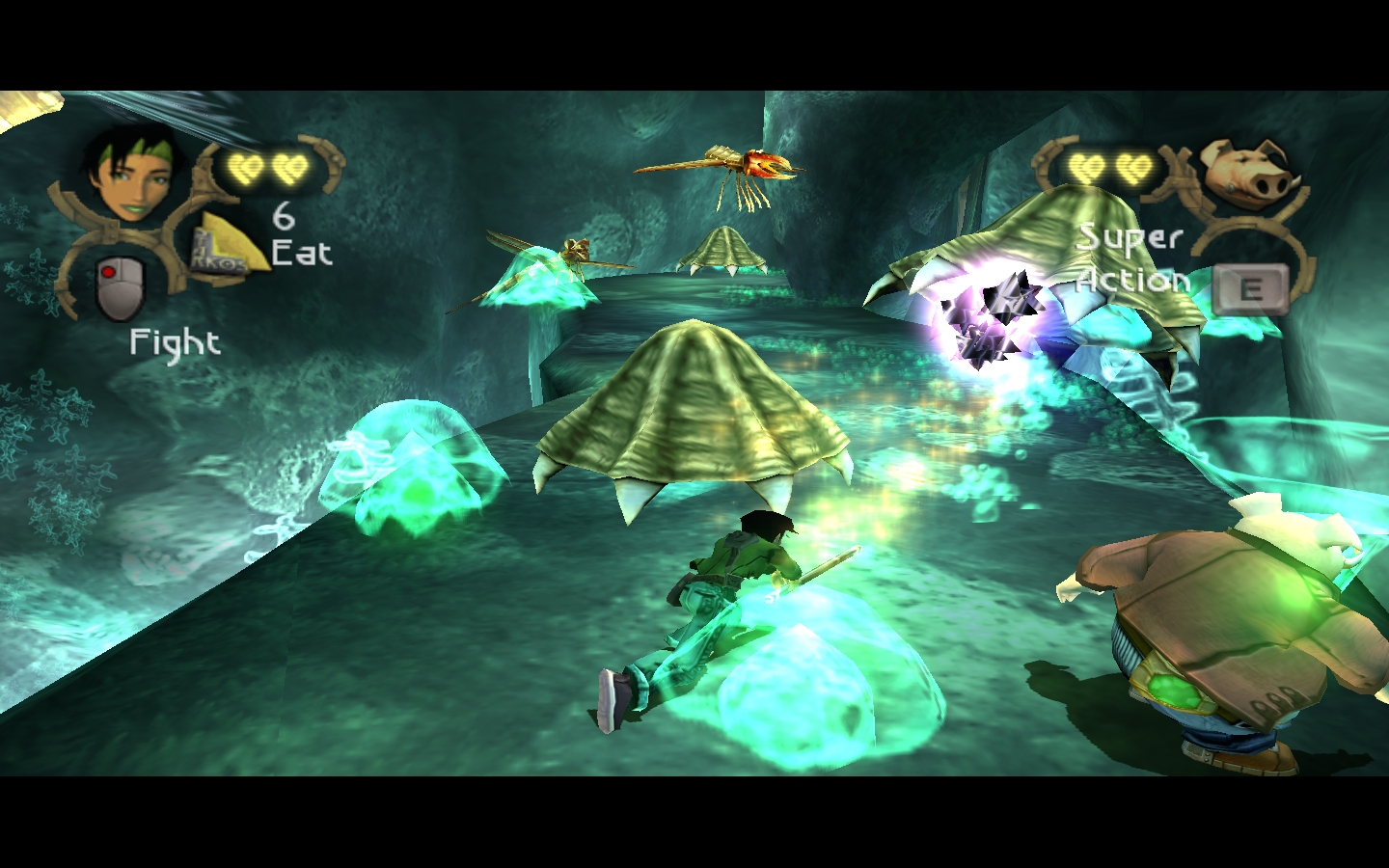
Beyond Good & Evil
Written by: Rik
Date posted: July 31, 2011
- Genre: Action
- Developed by: Ubisoft
- Published by: Ubisoft
- Year released: 2003
- Our score: 8
If you didn’t already know, a minimal level of internet research would soon tell you that Beyond Good & Evil has a bit of a reputation as an under-appreciated gem. And, as someone who specialises in minimal levels of research, that was enough to persuade me to pick up a copy, having been one of the many who missed it first time around.
Had I bothered to delve a little deeper into the intricacies of the game before making the purchase, though, I would have found much to put me off. Beyond Good & Evil features all of the following: lengthy and compulsory stealth elements, non-essential quests, mini-games and exploration, talking animals, characters with apostrophes in the middle of their name for no apparent reason – and, worst of all, there’s no quick-save feature. Without speculating whether any or all of these things contributed to BG&E‘s poor commercial performance, it’s fair to say that if you were putting together a list of major gameplay elements and minor aesthetic irritants that would deter me from playing a game, then it would pretty much look like the one above. Still, having said that, I did rather like it, so it must be pretty good, eh? [You’re assuming we trust your judgement – FFG reader].
In Beyond Good & Evil, you are Jade, a photojournalist living on the planet of Hillys with her ‘Uncle’ Pey’J (who happens to be a talking pig) and a lighthouse full of children (some of whom are animals). The citizens of Hillys are under constant threat of attack from a sinister alien race known as the DomZ and are reliant on the dubious protection of Alpha Section forces who, despite their considerable bluster, seem incapable of effective and timely resistance. While on a freelance assignment, Jade soon discovers that all is not what it seems, and that the people of her planet are suffering at the hands of a powerful conspiracy. And so on – I don’t think it’s spoiling the rest of the game to say that you get involved in trying to expose that conspiracy to your fellow citizens.
What kind of game is BG&E? The loose description would be ‘action-adventure’ – but not in a Tomb Raider kind of way, although there are certainly elements of Lara Croft here. It’s a curious hybrid of lots of different genres – there’s the story and chit-chat of an adventure, the open environment, exploration, levelling-up and occasional hack-and-slash combat of an RPG, the object-moving puzzles and leaping about of Tomb Raider (as previously mentioned), the all-out action of a blaster, plus the dubious pleasures of hover-racing and air-hockey sub-games. Usually, such an approach brings about an ambitious but ultimately flawed title – I’m thinking particularly of The Nomad Soul here (another member of the illogical-use-of-apostrophes-in-names club, incidentally) – but, remarkably, it all hangs together here in a way that actually works quite well.
Despite all the different gameplay elements, the structure of the game can largely be broken down into two distinct sections: when you’re undertaking a conspiracy-related mission, and when you’re not. The latter sees you exploring Hillys at your leisure with the aid of your trusty hovercraft, either visiting shops or speaking with fellow Hillyans in the main city, or going further afield in search of money or pearls – an alternative form of currency which can be exchanged for equipment for your hovercraft at the Mammago garage (which, incidentally, is staffed exclusively by talking rhinos). Most of the time, the upgrade will allow you to get to a previously-inaccessible area and continue with the main story, and the between-mission segments essentially boil down to a matter of getting hold of enough pearls to progress. Still, while Hillys isn’t the largest game world you’ll ever be given freedom to explore, there’s plenty to see and do while you go about your business. Pearls can be taken from cave-dwelling flying nasties or from local looters – or you can enter into competition to win one, either at the air-hockey table at the Akuda bar, or via the various hovercraft races.
Another way to get hold of money and pearls is by taking photographs of the local wildlife and sending them to the local science museum (well, Jade is a photographer, after all). What sounds like a troublesome and fiddly chore turns out to be anything but: for one thing, once you’ve got past the very early stages, you’re never actually forced to take any pictures of animals if you really don’t want to; and for another, sightings of new animals normally happen completely naturally as you progress through the game – you’re rarely hunting around the game map in search of some species you’ve not seen before, but at the same time you never feel like new ones are signposted particularly, so you also need to have your wits about you to take a photograph (especially if, as is often the case, the species in question is about to attack you). In other words, it’s actually quite a fun challenge to keep your eye out for new animals as you go along, and this is the kind of original little touch that can endear BG&E to you.
Jade’s camera also comes in handy on the missions themselves, which are largely based around infiltrating a heavily-guarded fortress, taking a handful of snaps at pertinent moments as evidence of conspiratorial evil-doing, and then getting out without dying. Owing to the fact that you’re usually outnumbered and outgunned (your only weapon is a stick, while they have lasers and all kinds of high-tech tomfoolery at their disposal) fighting is rarely a viable option and so there’s a lot of sneaking around to be done.
Tip-toeing around undetected isn’t normally my idea of fun (either in games, or in real life – I’d make a really shit burglar) but it has to be said, it’s done well here. Generally, I don’t mind stealth if there’s some consistency and predictability in the AI so that you at least know what you can and can’t get away with. BG&E is fairly unforgiving in that you’ve got a lot of guards to sneak past, and you really don’t have a chance in a fight (indeed, there are plenty of ‘instant-death-at-the-hands-of-a-laser’ moments), but in mitigation, the Alpha Sections follow a set pattern, have very little in the way of peripheral vision, and have a weak-point that can be exploited if you really need to get rid of one of them (see Hey! Are you all right?, for more). While they aren’t the smartest enemies in the world, there’s equally little chance of you blundering through by accident rather than design, so it’s a case of being patient, watching their patterns and then choosing your moment to sneak past.
It can be challenging but it’s rarely frustrating, which is how you’d like it to be. As a cowardly gamer, I’d have liked a few more save points (or, better still, a quick-save option) but in fairness, they are scattered about fairly liberally, and there’s almost always one there waiting for you after a particularly challenging section.
For most of the game you’re accompanied by one of two companions – either Pey’J, or an earnest chap known as ‘Double-H’ (I’d say more, but if I do, I’ll give away rather too much about the story). Again, the history of having AI companions in games is littered with tales of buggy irritation, but here they’re generally well behaved. Thankfully, you don’t need to shepherd them through any of the sneaky bits (usually some contrivance or other will force you to split up), although you do have to keep an eye on their health while in battle, where they’re generally more of a help than a hindrance. While you have little direct control over the behaviour of your buddies, hitting the ‘Super Action’ key will instruct them to perform a special attack, sending your enemies flying into the air, and allowing you to dispatch them with relative ease.
We seem to be hovering around a theme of ‘things that could quite easily have been poorly-implemented and/or irritating but actually aren’t’ and, while it might seem like a backhanded compliment, it’s precisely because BG&E gets most of these things right rather than wrong that it’s such a joy to play. I have other minor gripes – I’m not crazy about the handling of the hovercraft, and I find it a little bit irritating that almost every room is separated by a loading screen and an associated pause, but the only thing I can really think of that counts as a genuine flaw is the camera, a bane of many third-person games, which has a nasty habit of getting in exactly the wrong place at a crucial moment. Even this, though, is nothing major.
Mention should also be made of the story, which I’m sorry to say I found a little underwhelming, perhaps because of raised expectations thanks to all the generic good noises I’d heard being made about it, but also because it’s a bit like a kids’ film with all of its earnest rebellion against sinister-but-vaguely-comical bad guys (plus, like I said, there’s talking animals) and I’m just not into that kind of thing all that much. Don’t get me wrong, though, I’d take it a thousand times over any game featuring gruffly-voiced space marines spouting poorly-scripted macho bullshit. And it’s all incredibly well-done: the acting is solid (for once) and particular attention seems to have been paid to the facial animation in close-ups and cut-scenes so that the characters actually seem to be talking, thinking and reacting. (In fact, the graphics are excellent throughout, come to think of it, although the gloss is taken off slightly by the lack of widescreen support).
There was a point some 3/4 of the way through when I did start to wonder where it was all going, and I was getting a little fed up of sneaking around, but just as my interest started to wane, I was immediately grabbed again by the final mission, which was suitably climactic and action-packed. If you’re one of these people who gripe about games that last 10 hours being ‘short’ then prepare to consider this a ‘short’ game, but to me it seemed to last just as long as it needed to.
Conclusion-time, then, and I have to be honest and say that I can’t quite bring myself to eulogise about BG&E in the same way as others have and continue to do. But then, considering it’s a game that contains so many potential reasons for me not to enjoy it, I actually did – thoroughly – and would therefore heartily recommend it to any fans of polished and innovative action/adventure titles who haven’t played it already. Ok? Ok!

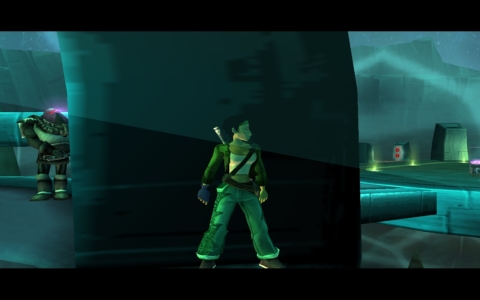
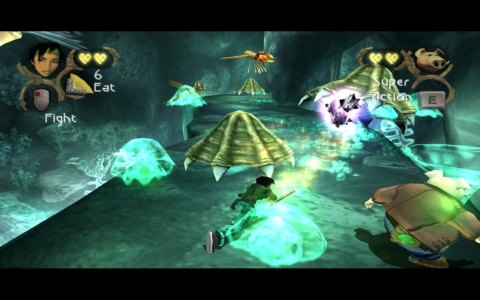
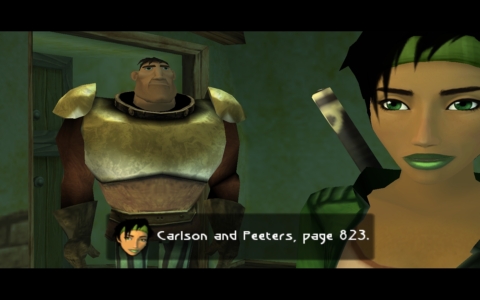
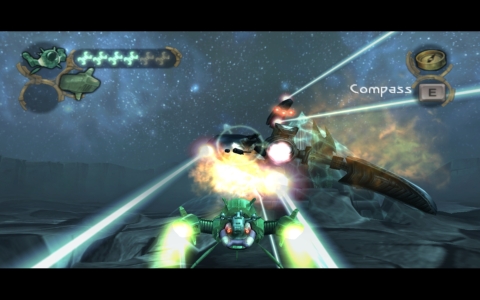

 Posts
Posts